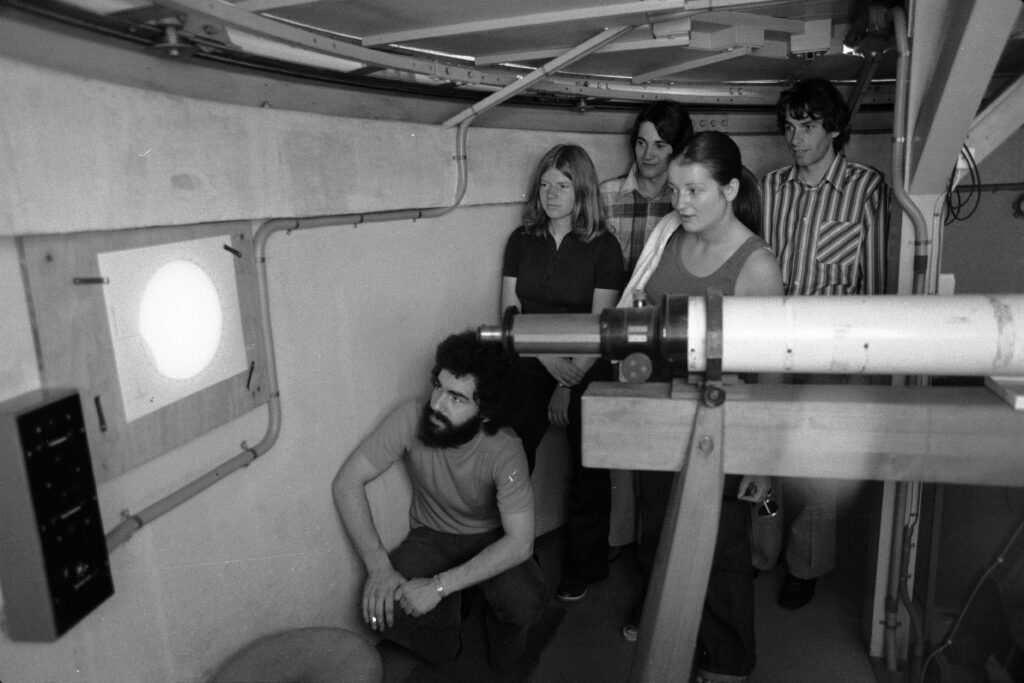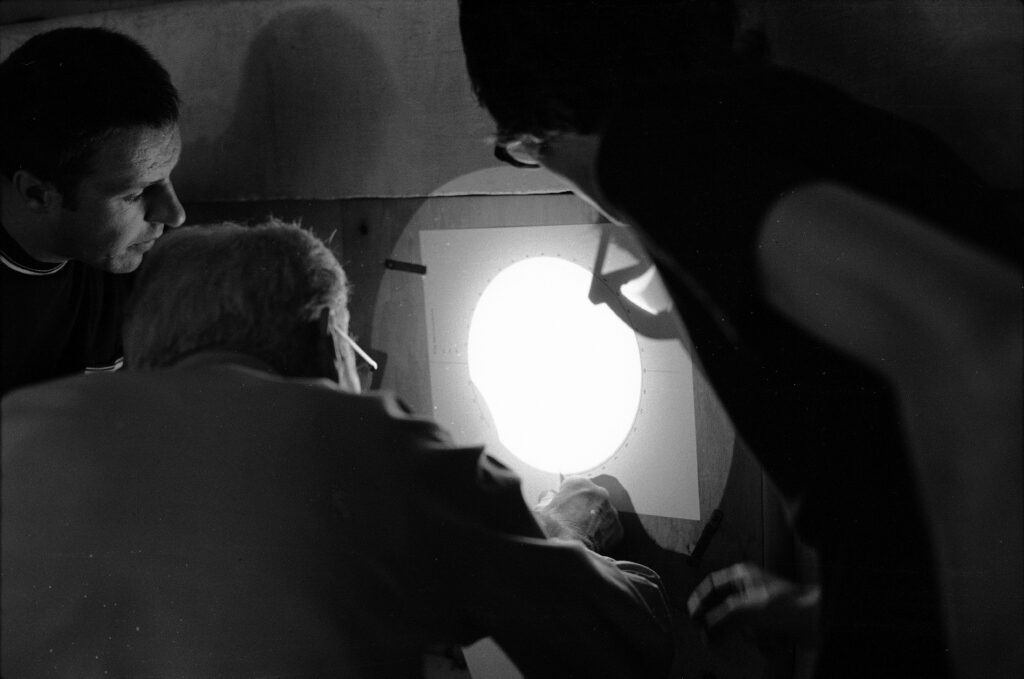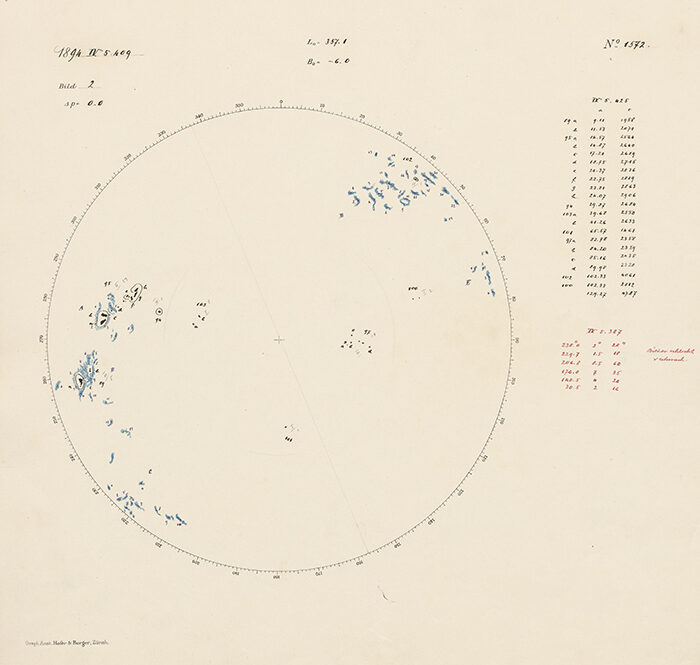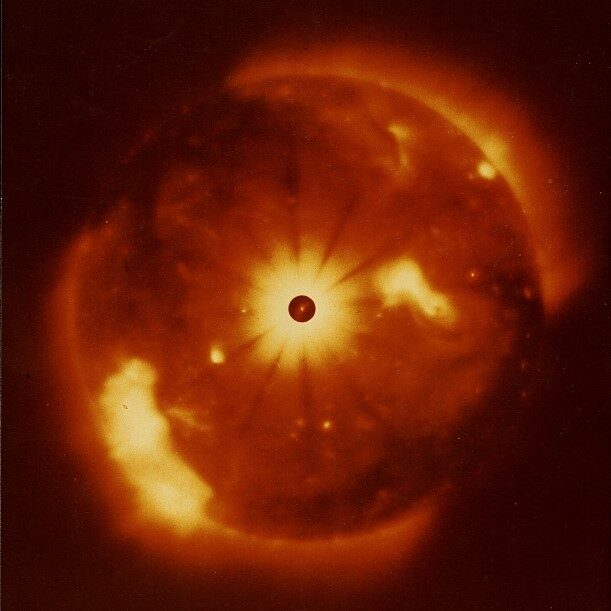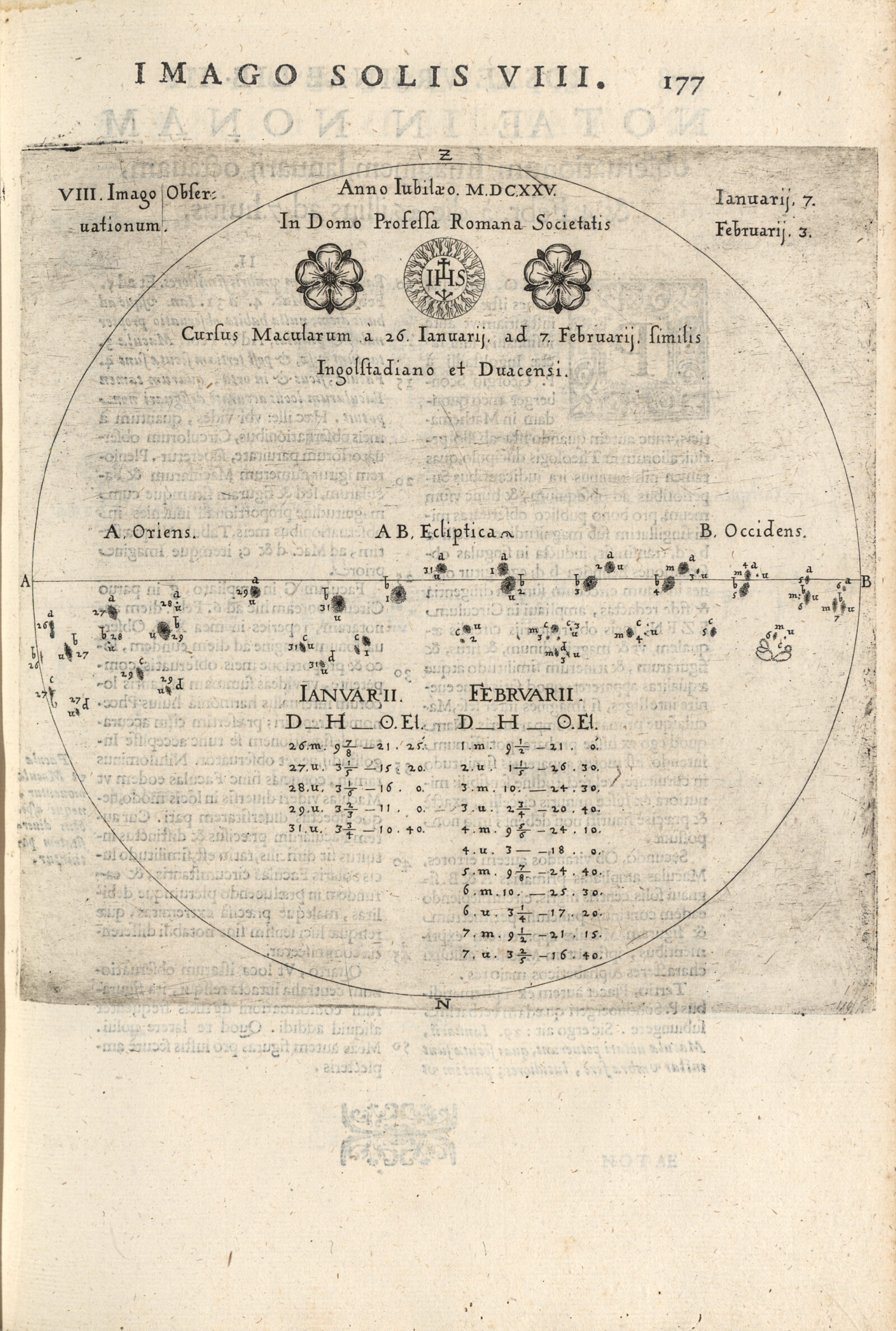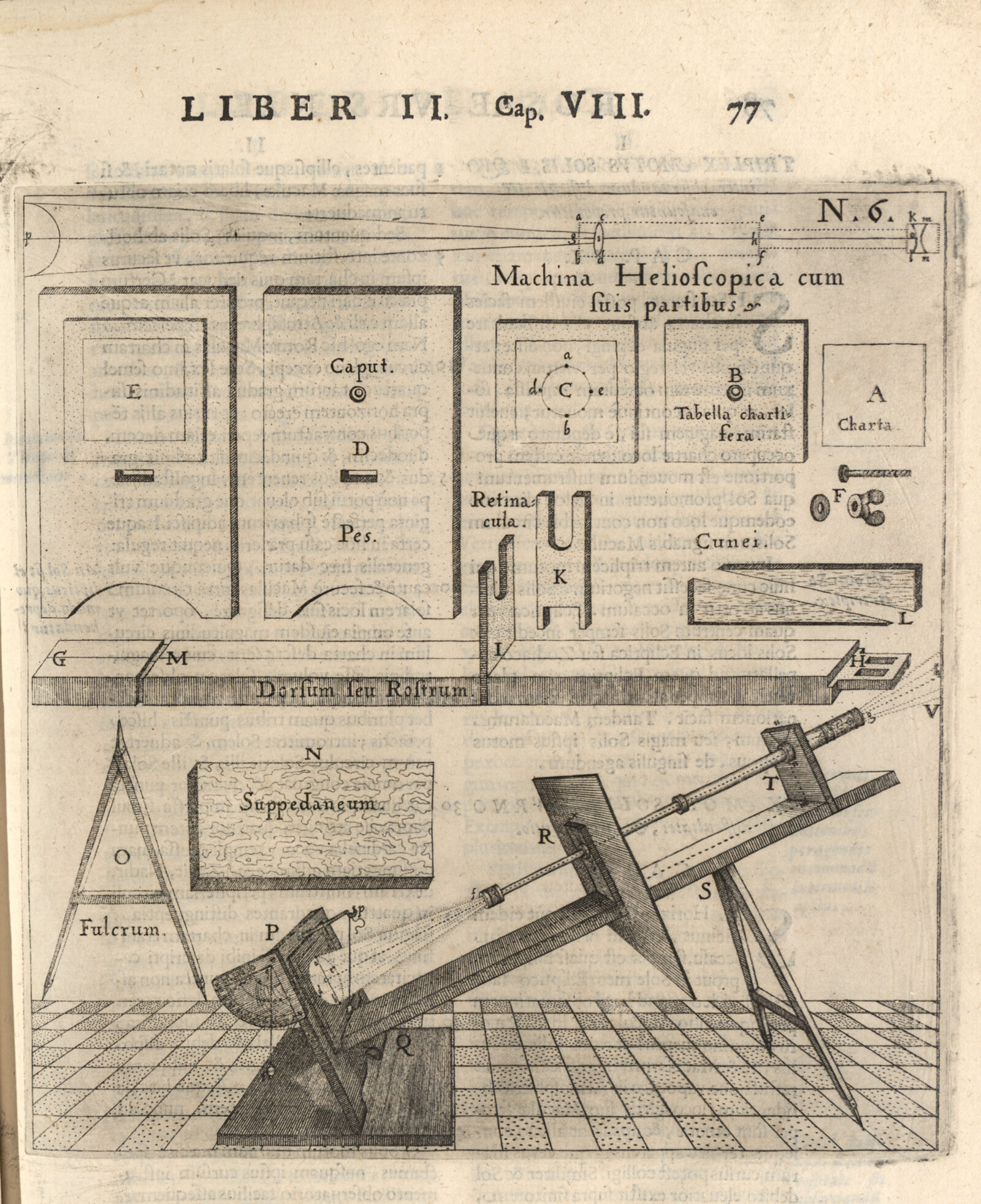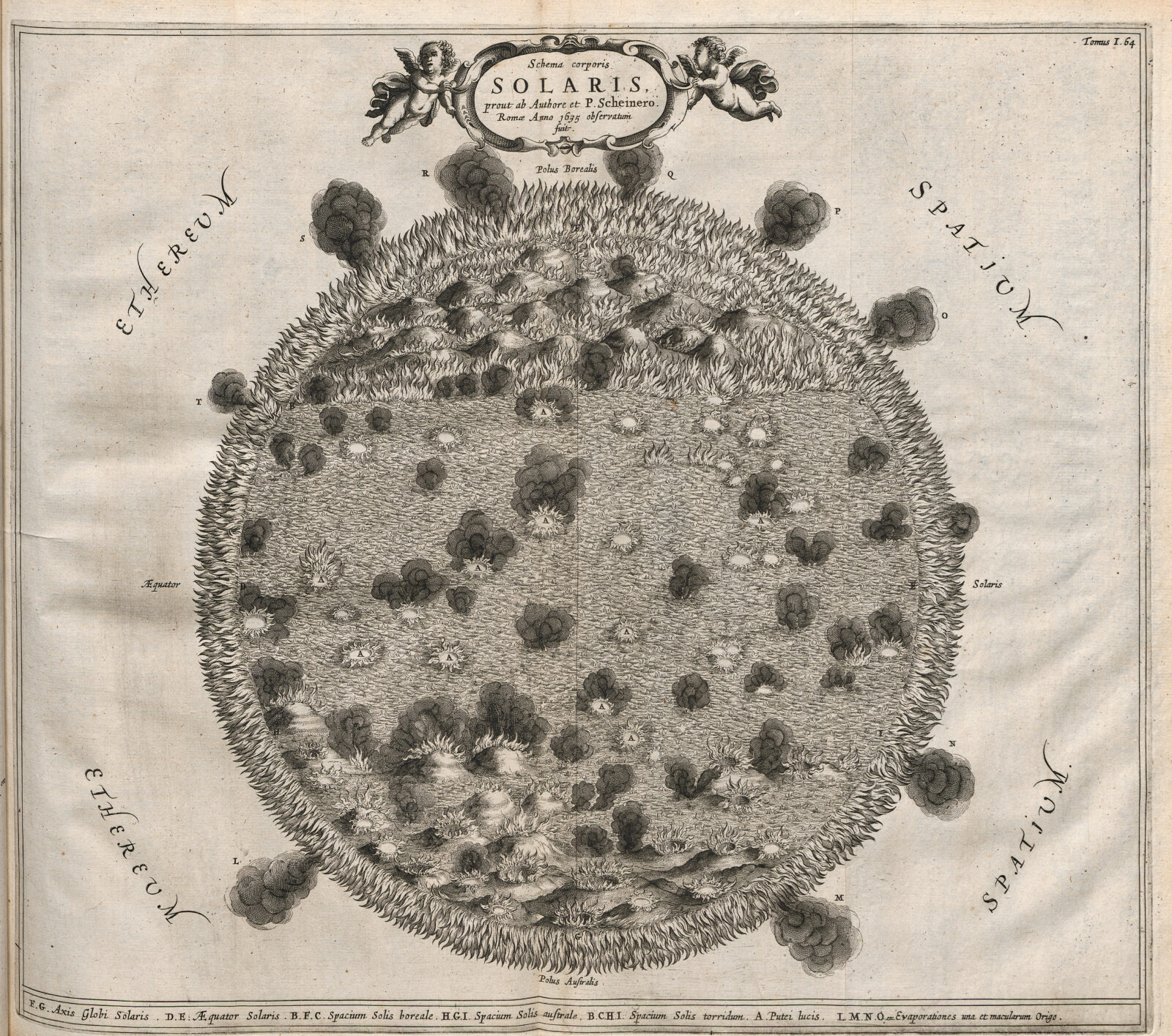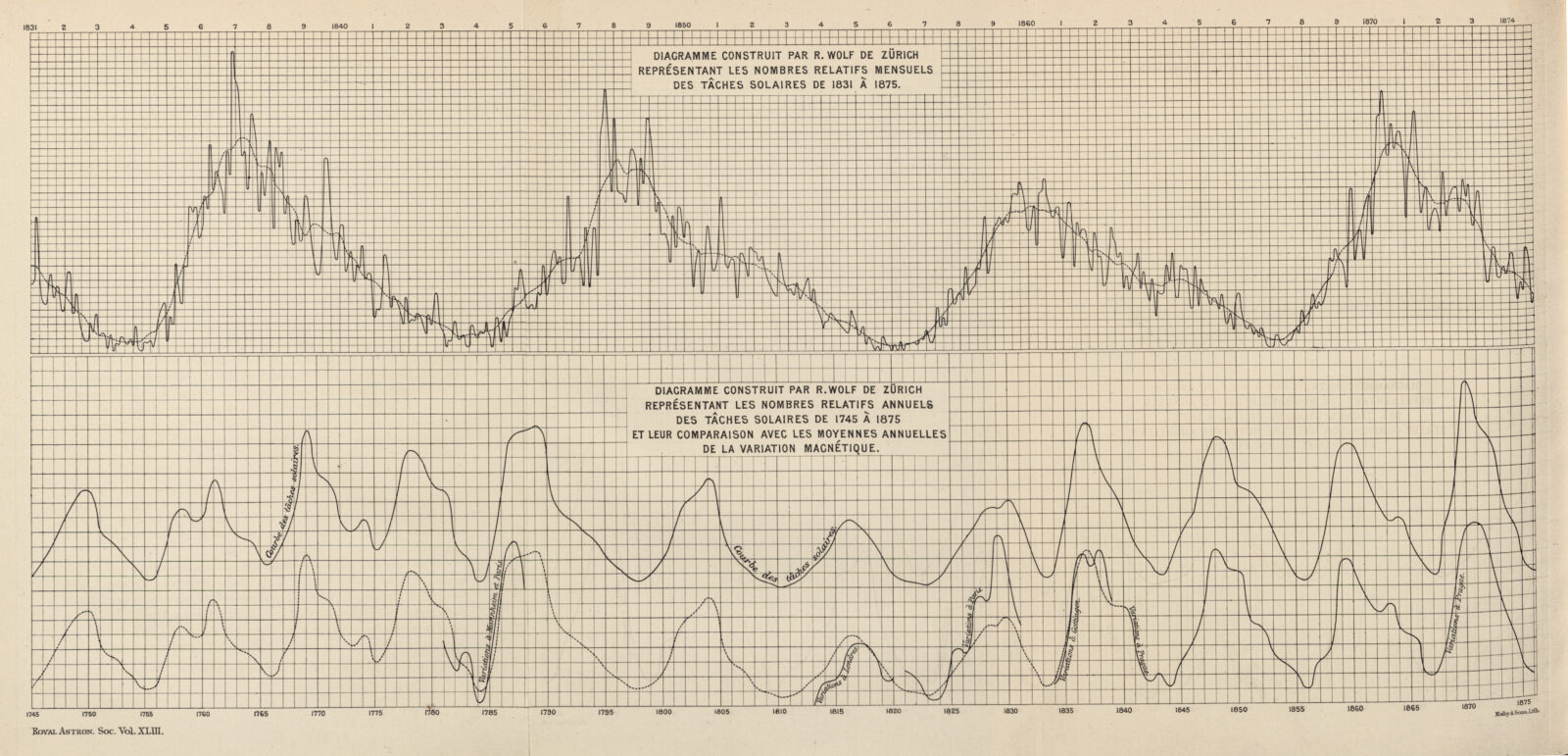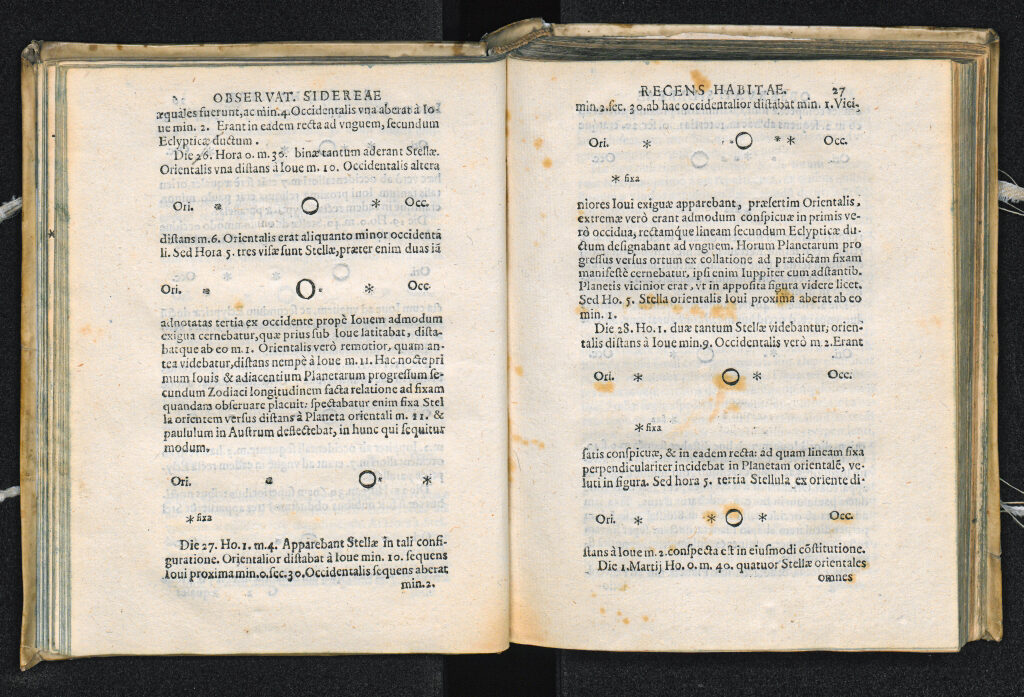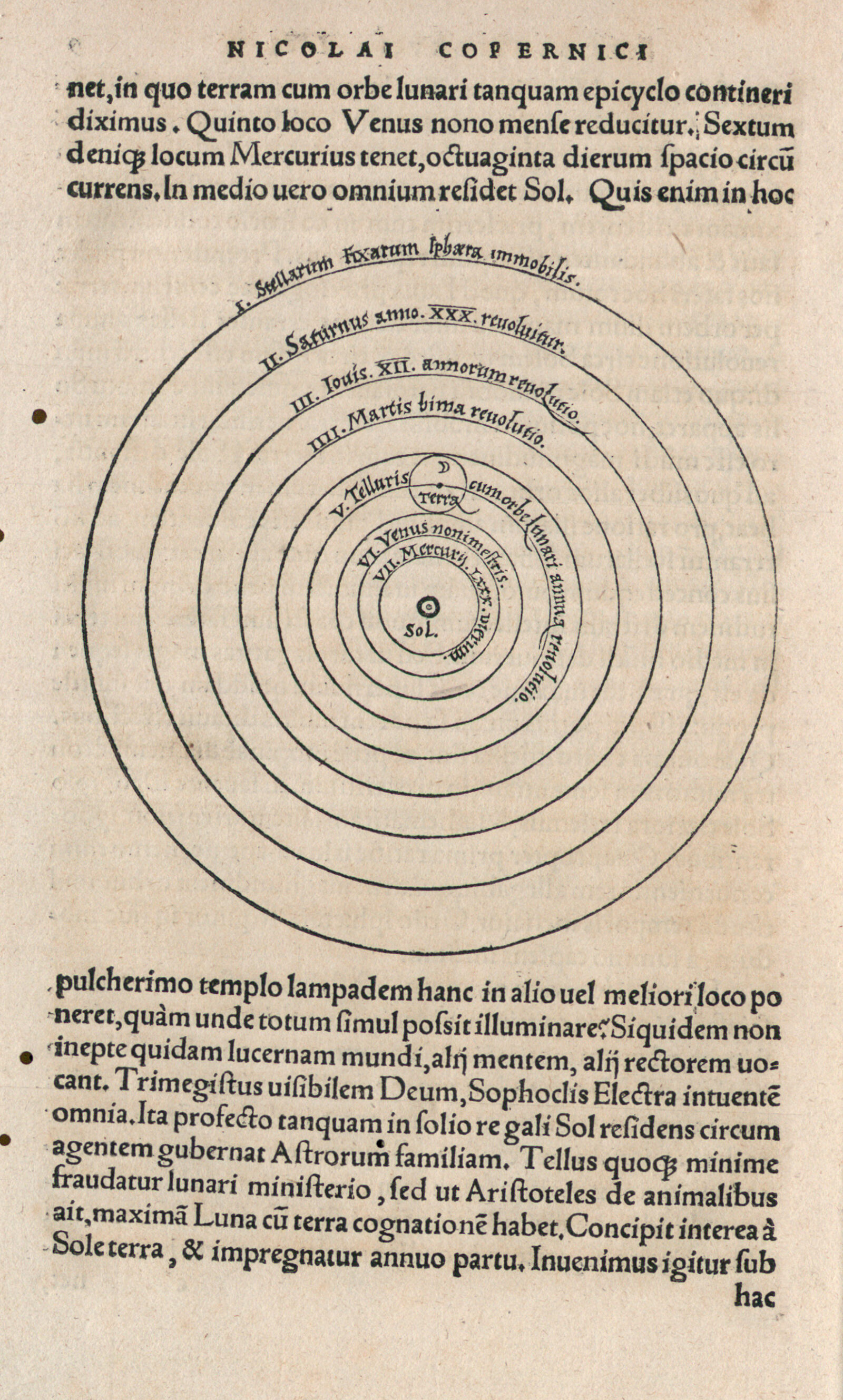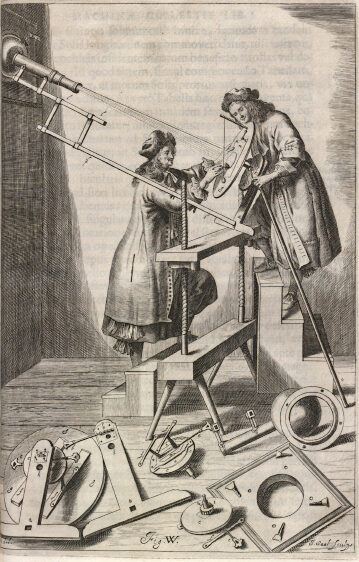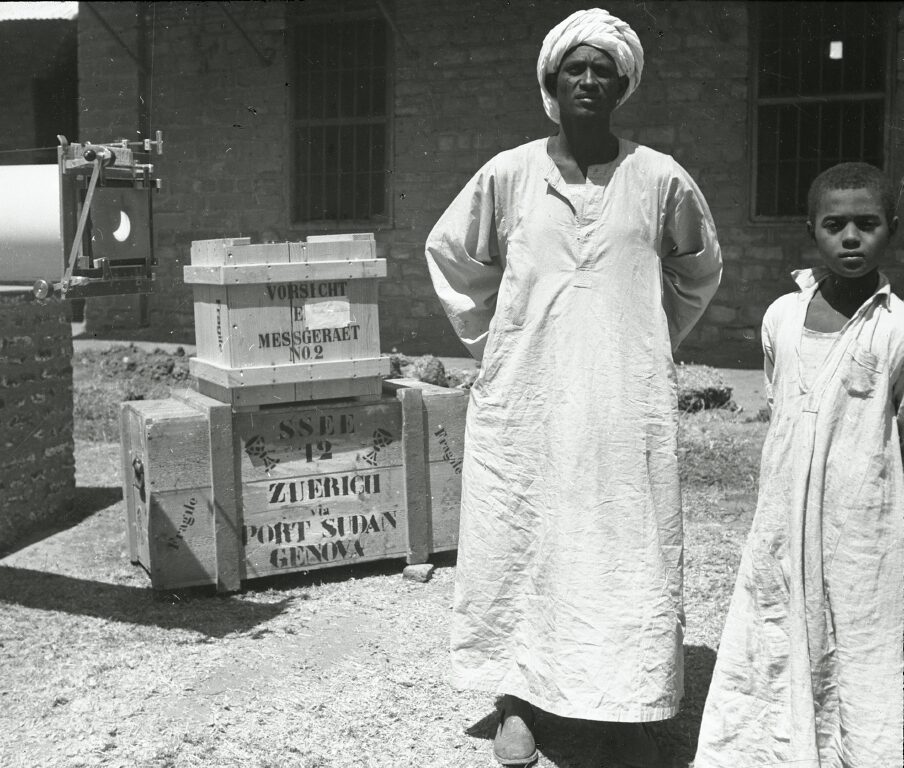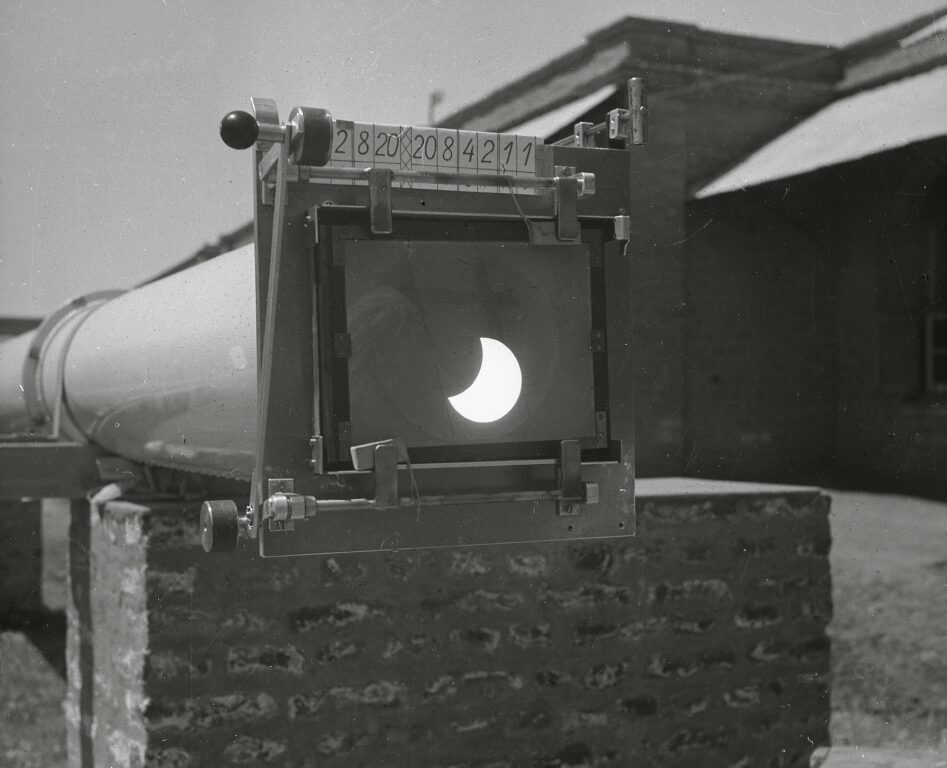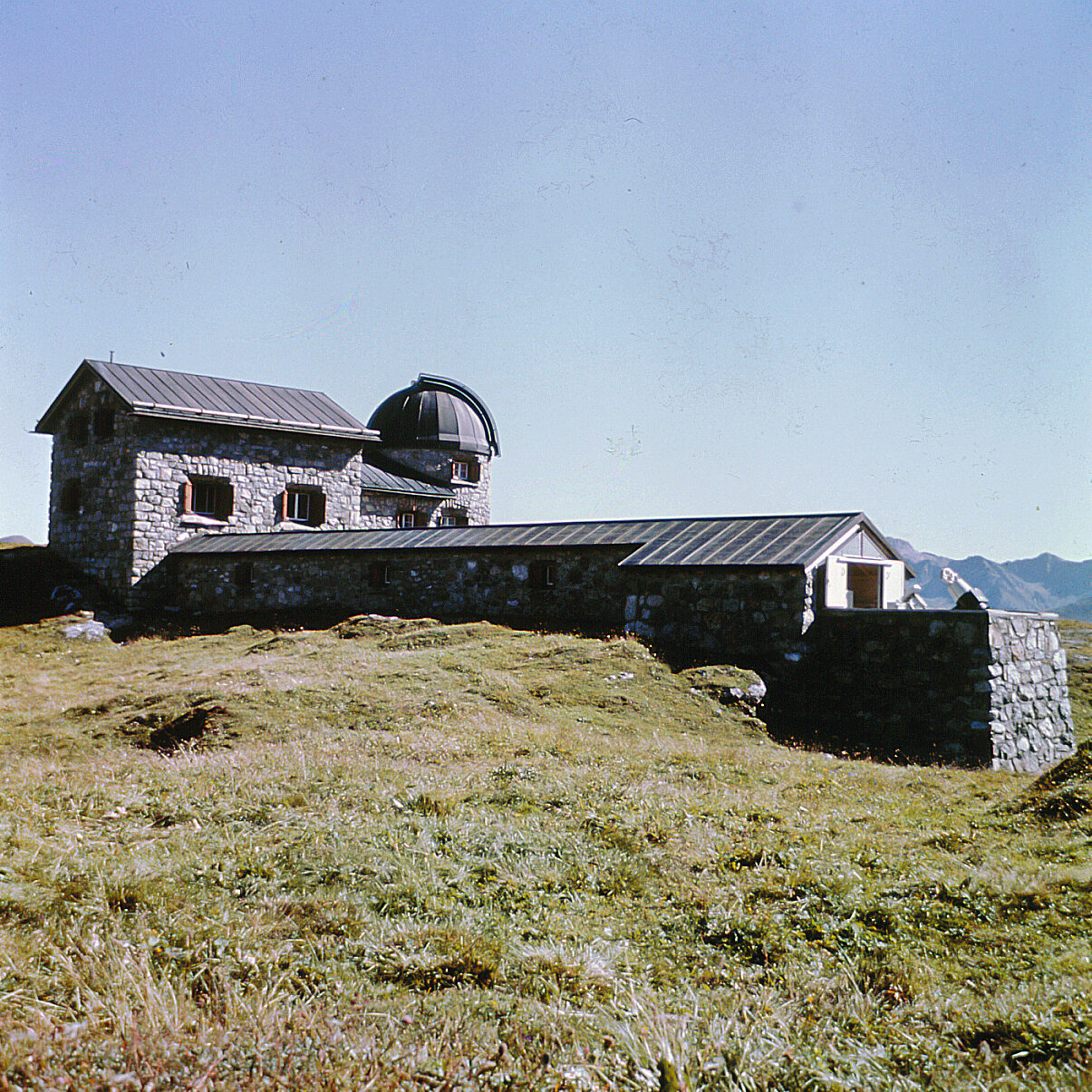Faculae, spots, flares
Solar research at ETH Zurich
Researchers from the ETH Sternwarte have observed the sun for over a century. Their chief interest lay in the mysterious sunspots. Their legacy is a data series which today is of inestimable value for climate research, among other disciplines.
The sun triggers positive feelings in us. It is a reliable source of light and warmth without it, no life on Earth would be possible. Yet the sun also has its moody and dangerous sides. Hot matter measuring up to 15 million degrees seethes away inside its core. Enormous eruptions occur on its surface, also still about 5,500 degrees warm, during which energy-charged particles are shot far into space. Sometimes, these also reach the Earth, which poses a danger to our infrastructure. The so-called solar storms can damage satellites, cause communication systems to collapse and paralyse power grids – as, for example, in eastern Canada in 1989, when power was down for nine hours, causing damage amounting to millions. Although early warning systems for solar storms based on measurements in space already exist, such as the American DISCOVR 1 satellite, these satellites only achieve an advance warning time of one hour at the most. “We have no idea when the next major storm will hit any earlier than this”, says Werner Schmutz, Professor at the Department of Physics at ETH Zurich and former Director of the Physical Meteorological Observatory in Davos (PMOD). According to the current state of scientific knowledge, it is not possible to predict accurately the time and location of large solar eruptions, the so-called flares. Nonetheless, we are not completely at the sun’s mercy: “We know when the probability is greatest”, says Schmutz. This is because the sun follows a certain cycle: its activity reaches a maximum every eleven years. Large eruptions occur much more frequently during a maximum. At present, however, we are experiencing a solar minimum, with the result that the risk to the Earth is lower.
Spot counting at ETH Zurich
The fact that we now know so much about the sun’s activity cycle can also be attributed to solar observations at ETH Zurich. The directors of the Swiss Federal Observatory, now ETH Sternwarte, researched and documented the processes taking place on the sun for over a century, between 1864 and 1980. The focus was placed on sunspots, dark spots on the surface of the sun. Their number is a simple and reliable measure of solar activity. Daily observation of the spots and evaluation of historical records resulted in a series of measurements documenting solar activity over the last 400 years.
Impact on the climate
“Sunspot statistics are of great value for research”, Schmutz comments. On the one hand, they help us to understand the processes inside our fixed star more accurately. On the other hand, they constitute an important basis for climate research. This is because the sun’s fluctuating activity also alters the intensity of its radiation. Although the differences are relatively small, they can influence the Earth’s climate. Today, modern measuring instruments are used to determine total solar radiation with precision, so-called radiometers, for instance. The reference value for global measurements 2 is provided by the World Radiation Centre, which is located at the Physical Meteorological Observatory in Davos (PMOD) and was headed by Werner Schmutz until May 2018. However, direct measurements of solar radiation have only been taking place for about 40 years. Nevertheless, longer data series are required in order to reconstruct the influence on the past climate and perform model calculations for the future. “Here, the spot statistics provide valuable information”, says Schmutz. The extremes are particularly revealing: during the second half of the 17th century, for example, almost no spots were observed over several solar cycles. “The sun was unusually inactive at the time”, explains Schmutz. This phenomenon went hand in hand with the so-called Little Ice Age, during which the Earth’s climate cooled significantly. By contrast, activity rose to a high in the 1950s. Since then, it has been declining continuously, which could have a cooling effect on the Earth’s climate. According to calculations by Schmutz and his colleagues, however, this would not exceed 0.5 degrees Celsius - not enough to arrest global warming triggered by human behaviour. Schmutz is therefore convinced that “the sun will not save us”.
Pioneer of solar research
We have Rudolf Wolf to thank for the fact that a comparison of solar activity over recent centuries is possible. A pioneer in sunspot research, he was appointed the first Professor of Astronomy at ETH Zurich (former Federal Polytechnical School of that time) in 1855. He had been fascinated by the strange spots, about which little was known at that time, during his previous tenure as an astronomy professor in Bern. Although the German astronomer Heinrich Samuel Schwabe had discovered that the number of spots reached a maximum approximately every 10 years as early as 1843, he was unable to determine the exact duration of the cycle, because the period of his observations was too short. Wolf, on the other hand, succeeded in doing this by carrying out historical research in addition to his own observations. He trawled through libraries all over Europe, collecting records, which went back to the years 1610 and 1611 and documenting findings from astronomers such as Johann Fabricius and Christoph Scheiner to Galileo Galilei, who were the first to describe the spots. Thanks to this long investigation period, Wolf succeeded in determining the average duration of the activity cycle more precisely and correcting it to 11.1 years 3 .
Wolf also began to count the sunspots daily and developed his own counting method. The so-called Wolf number 4 is still determined today in the same way and is considered an international standard. From 1864 onwards, Wolf carried out his solar observations from the Swiss Federal Observatory, of which he became the first director and which the famous architect Gottfried Semper had built according to Wolf’s specifications. In addition to his astronomical work, Wolf also headed the Central Meteorological Institute, which was also housed in the observatory. Additionally, he became the first director of the ETH Library in 1855. He collected, acquired and procured astronomical works, by Galilei, Copernicus and Hevelius among others, which now number among the most valuable old holdings of the ETH Library (e.g. Collection of Astronomical Instruments 5 ).
Drawings on 30,000 sheets of paper
However, Wolf’s great passion throughout his life was solar research. His successors used the same telescope with which Wolf worked, which ensured a great homogeneity of the observations. 6 Alfred Wolfer, initially Wolf's assistant and, from 1894 onwards, himself the director of the observatory, first noted the number of sunspots observed daily and then began to record their exact position on drawings. To do this, he used a telescope to project the image of the sun onto a sheet of paper. He sketched all visible spots as well as the brighter faculae. This allowed him to determine their position and size and observe the changes over the course of a cycle. For over a century, projection drawings on almost 30,000 sheets of paper were produced at the observatory in Zurich and later at the solar observatory in Ticino. These documents are now in the possession of the ETH Library and can be digitally retrieved 7 .
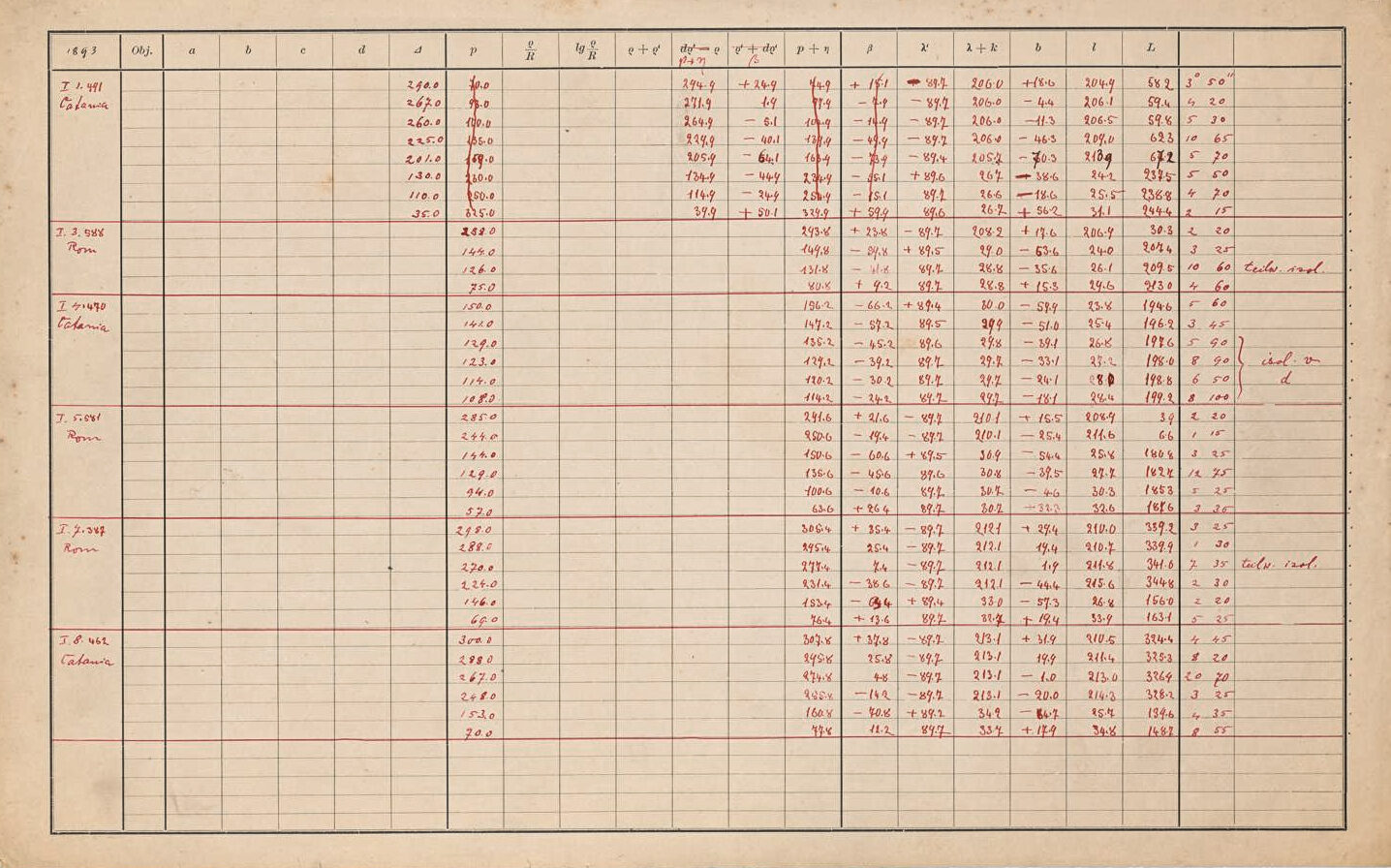
In addition to the sunspots, the observatory also developed other research and observation programmes over time. Alfred Wolfer investigated the so-called prominences, for instance 8 . These are huge gas arcs that frequently occur near sunspots and extend far into space, away from the surface of the sun. Their observation became possible in 1888 thanks to a newly purchased instrument. The observatory gained an international reputation thanks to its precise, continual observations. Under the directorship of William Otto Brunner (1926–1945), it was designated the world centre for sunspot counting by the International Astronomical Union. The number of sunspots published daily was the reference for the worldwide research community.
Hot on the heels of the solar eclipse
Max Waldmeier, the fourth and final director of the Swiss Federal Observatory, also concentrated on researching the corona 9 , the outer atmosphere of the sun. At about one million degrees Celsius, it is much hotter than the actual solar surface. It is also the source of the eruptions caused by the solar storms. Many mysteries surrounding the corona remain unsolved today. A current NASA mission seeks to clear some of these up: the “Parker Solar Probe” 10 space probe is currently on its third orbit around the sun, and is closer to our fixed star than ever before. Max Waldmeier naturally had no such possibilities at that time. However, he exploited the fact that the corona is visible as an aureole during a total solar eclipse for his observations from Earth. Waldmeier carried out about twenty solar eclipse expeditions between 1952 and 1980 , which led him to Sudan, Sri Lanka and Peru, among other places. The Arosa Astrophysical Observatory 11 was built on his initiative, where corona observations were carried out with a special device. He also founded an observation station in Ticino in 1957, which is now the Specola Solare Ticinese in Locarno-Monti, which today is organised by an association 12 . The aim was to be able to observe sunspots even on days when the weather in Zurich was poor. From 1951 onwards, the solar tower erected directly next to the observatory served to study the sun.
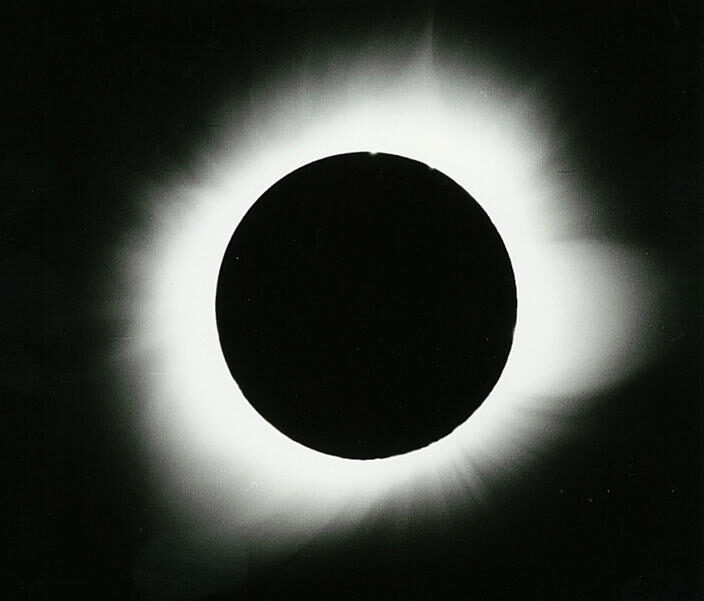
Digitised sunspot drawings
Sunspot research at ETH Zurich ended with Waldmeier’s retirement in 1980. The Royal Observatory in Brussels with the World Data Center Sunspot Index and Long-term Solar Observations (SILSO) 13 . took over the counting of sunspots. Since 1981, it has published the international sunspot number 14 daily, which is calculated from observations from around 100 stations worldwide. One of these is the station in Locarno, which is now run by an association. It also functions as a reference station with which all other values are compared. As the observers there continue to determine the number of sunspots in the same way as observatory director Waldmeier before them, great continuity in terms of counting is ensured. In addition, sunspot drawings are also made daily in Locarno.
At present, the ETH Zurich University Archives 15 and the DigiCenter at the ETH Library on behalf of the Specola Solare Ticinese are digitising 16 the sunspot data series produced since 1980, and making them available on e-manuscripta.ch 17 . This complex project will last five years, and is funded by MeteoSwiss, the Federal Office of Meteorology and Climatology, as part of the Global Climate Observing System (GCOS) – further proof of the importance of sunspot data for climate research.
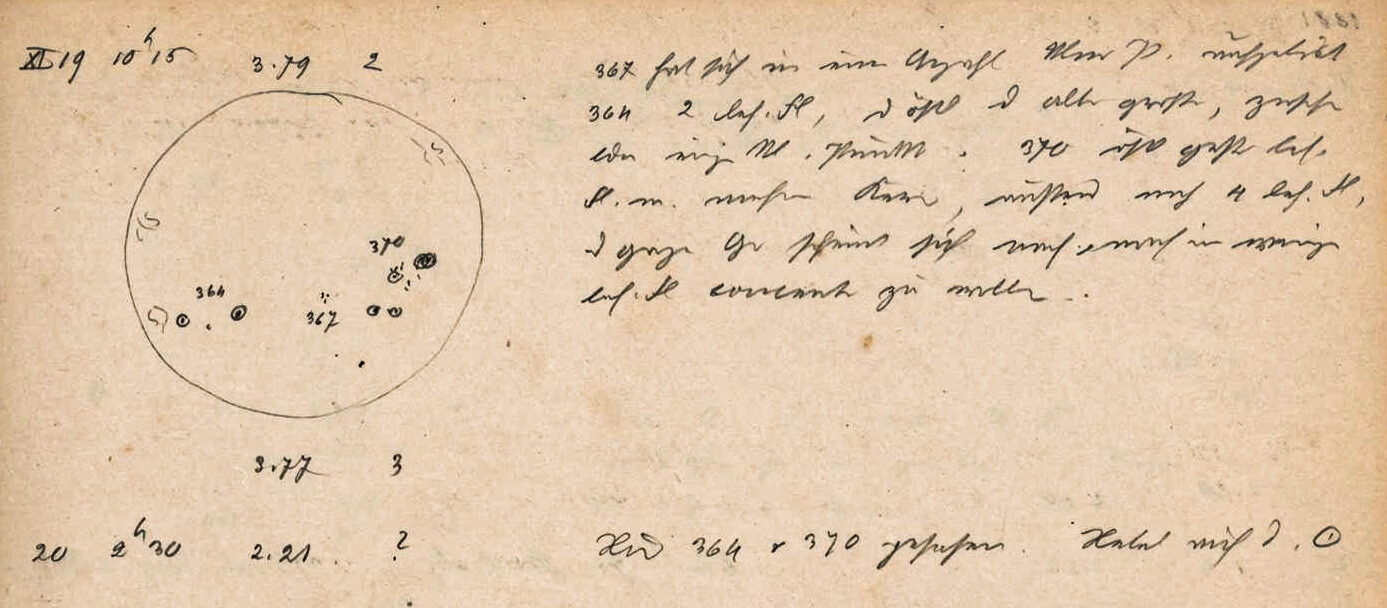
Mistakes due to poor eyesight and a find of the Century
However, one disadvantage of the sunspot statistics is that the results of a count can vary greatly depending on the observer, instrument and counting method. As a result, Rudolf Wolf introduced a correction factor for each observer when making his calculations. Nevertheless, distortions arose, even in the case of Wolf himself: His eyes grew worse with age, for instance, and he was unable to make out smaller spots that other observers could still see. A further problematic aspect is that historical data from the 17th or 18th centuries frequently fails to specify which instrument or counting method was used. “This leads to statistical errors”, says Frédéric Clette, who heads the data centre for determining the international number of sunspots at the Brussels Royal Observatory. A few years ago, Clette set up a working group to clean up the statistics. In order to understand how the number of spots was determined, researchers need detailed records and raw data. But these are often missing. For instance, it was presumed that some of the tables of the Swiss Federal Observatory had been lost since its closure. These were only recently localised and identified thanks to the cooperation between researchers and archive staff. “This is a find of the century for us”, Clette was pleased to report. The rediscovered handwritten records are now also housed in the ETH Zurich University Archives. The ETH Library is currently working on digitising them alongside the sunspot drawings, with the aim of making them accessible online for research purposes.
Focus on sustainability
ETH Zurich itself is currently researching new aspects of the sun, such as how its energy can be used sustainably. Aldo Steinfeld, Professor of Renewable Energy Sources, is pursuing an unusual approach. He and his group succeeded 2019 in producing fuel solely from air and sunlight 18 . The necessary reaction takes place in a solar reactor. This is heated to 1,500 degrees Celsius with the aid of mirrors that focus the sunlight on a single point. A so-called synthesis gas is produced, which can then be processed into liquid fuel, such as kerosene. The advantage? It is CO2-neutral and thus protects the climate.
However, the processes on the sun itself are also being subject to further investigation. Louise Harra, who took up her post as Professor of Solar Astrophysics at ETH Zurich in early 2019 and is also the new Director of the World Radiation Centre and the Physical Meteorological Observatory in Davos 19 , is contributing to this research. She is examining what triggers of solar flares and the formation of solar wind. She is also co-head of research on the development of the EUV Imager, a measuring device that is intended to deliver high-resolution images of the solar atmosphere. It will be launched into space in 2020 on board the Solar Orbiter space probe of the European Space Agency (ESA). The examples illustrate the fact that, even though spots are no longer counted today, the sun remains the focus at ETH Zurich.
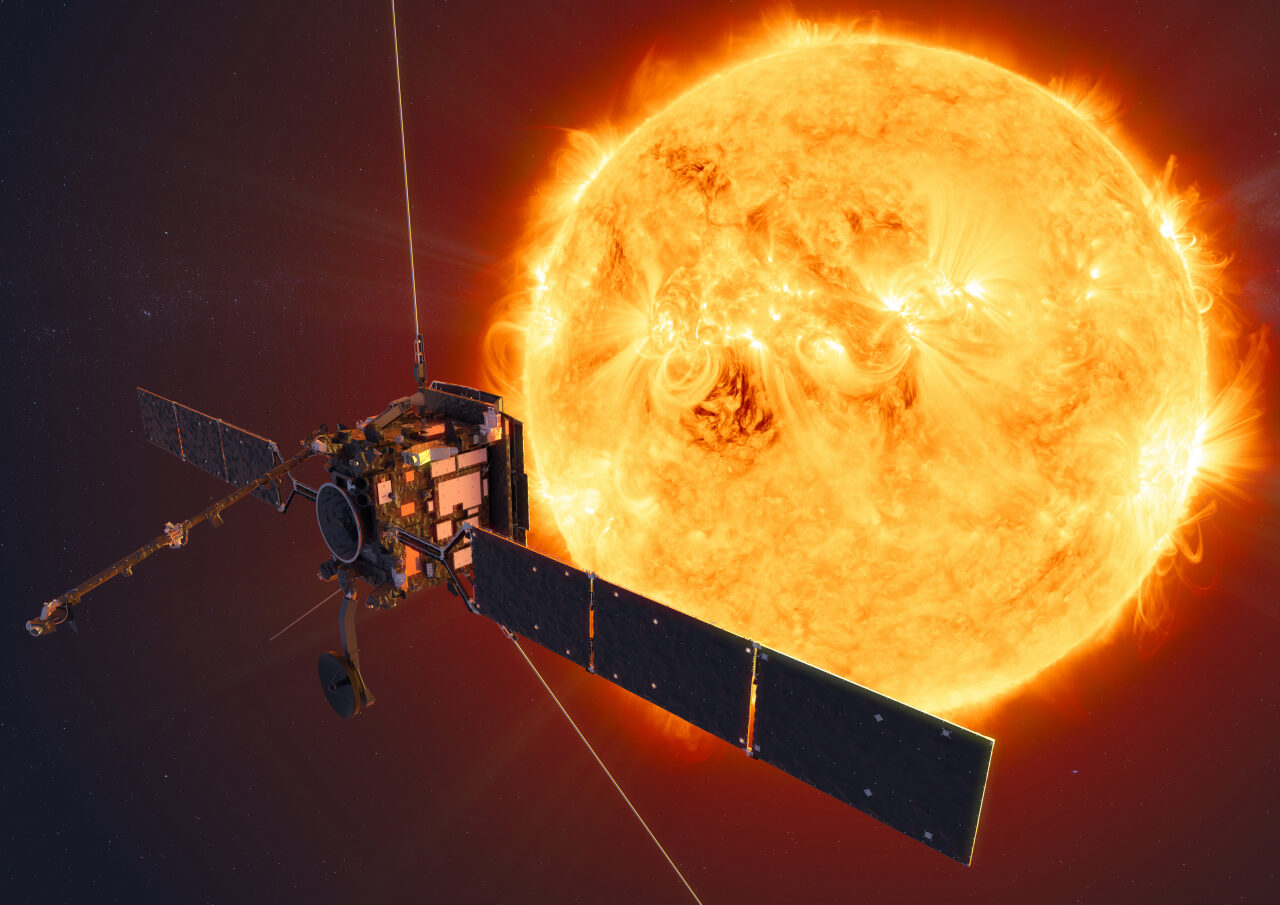
Footnotes
- https://www.nesdis.noaa.gov/content/dscovr-deep-space-climate-observatory ↩︎
- Further information on the reference and the reference value for solar radiation measurements https://www.metas.ch/dam/data/metas/Dokumentation/metas-publikationen/metinfo/metinfo01-2012.pdf ↩︎
- This corresponded to the state of scientific knowledge at that time. Today, it is known that variations between of between 8 and 14 years are possible. ↩︎
- The Wolf number is calculated according to the following formula: R = k (f + 10 g), where f is the number of individual spots, g the number of groups of spots, and k a correction factor that depends on the observer and the observation instrument used. ↩︎
- The Collection of Astronomical Instruments contains historical instruments from the former Eidgenössische Sternwarte in Zurich. It is part of the Collection of scientific instruments and teaching aids ↩︎
- This is now in the care of the astronomer Thomas K. Friedli in Belp, who continues to count sunspots using Wolf’s method. ↩︎
- Collection of records on solar activity: https://www.e-manuscripta.ch/sonnenbeobachtung/nav/classification/1726380, from which the sunspot drawings are taken: https://www.e-manuscripta.ch/search/quick?query=Sonnenfleckenzeichnung&s=date ↩︎
- http://www.library.ethz.ch/ms/Virtuelle-Ausstellungen/Sonnenfinsternis-Mythos-und-Wissenschaft/Die-Protuberanzen ↩︎
- http://www.library.ethz.ch/ms/Virtuelle-Ausstellungen/Sonnenfinsternis-Mythos-und-Wissenschaft/Die-Korona-Forschung-der-Eidgenoessischen-Sternwarte ↩︎
- http://parkersolarprobe.jhuapl.edu/index.php ↩︎
- http://www.library.ethz.ch/ms/Virtuelle-Ausstellungen/Sonnenfinsternis-Mythos-und-Wissenschaft/Die-Korona-Forschung-der-Eidgenoessischen-Sternwarte ↩︎
- Associazione Specola Solare Ticinese (ASST), http://www.specola.ch/e/ ↩︎
- www.sidc.be/silso ↩︎
- International sunspot number = the Wolf number; this number shows e.g. sunspot forecasts and comes from the Sunspot Index Data Center SIDC in Brussels ↩︎
- http://www.library.ethz.ch/Hochschularchiv ↩︎
- https://www.library.ethz.ch/en/Ueber-uns/Projekte/Erschliessung-und-Digitalisierung-der-Sonnenfleckenzeichnungen-der-Beobachtungsstation-Locarno-Monti ↩︎
- the digital platform for manuscript material from Swiss libraries and archives ↩︎
- https://ethz.ch/de/news-und-veranstaltungen/eth-news/news/2019/06/mm-solare-mini-raffinerie.html ↩︎
- https://academiaraetica.ch/en/2019/03/new-director-for-pmod-wrc/ ↩︎
